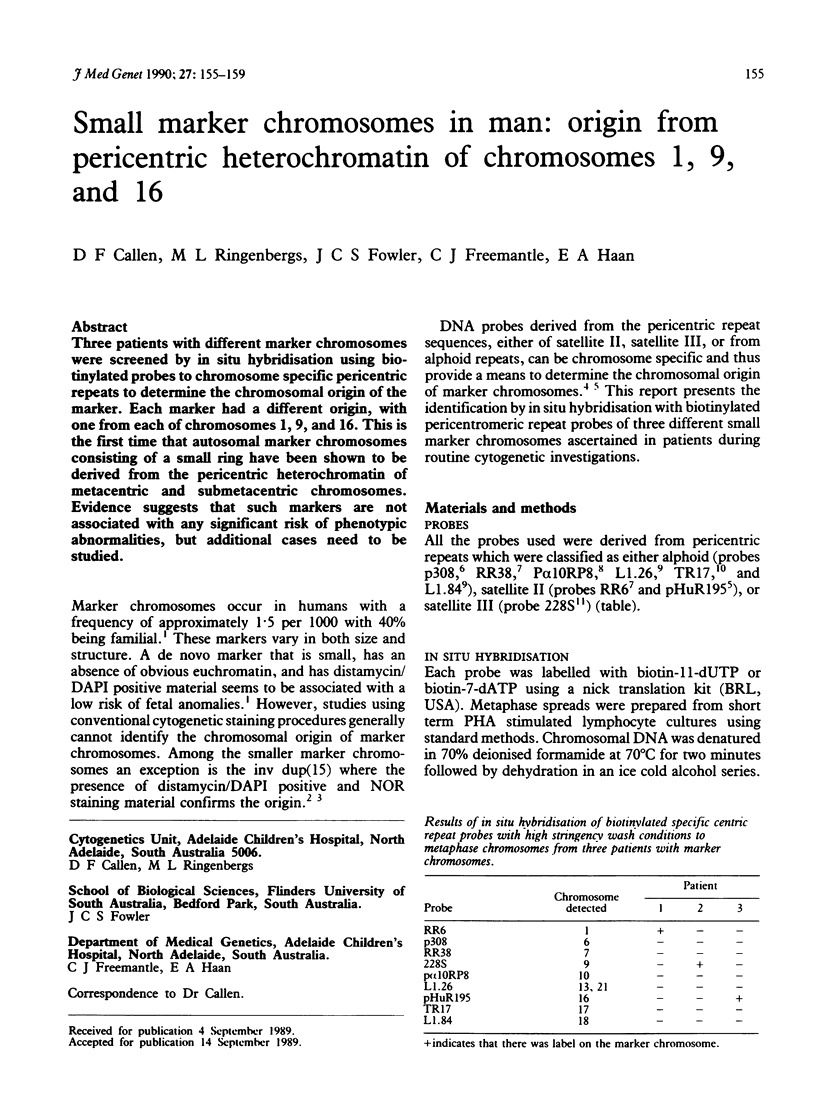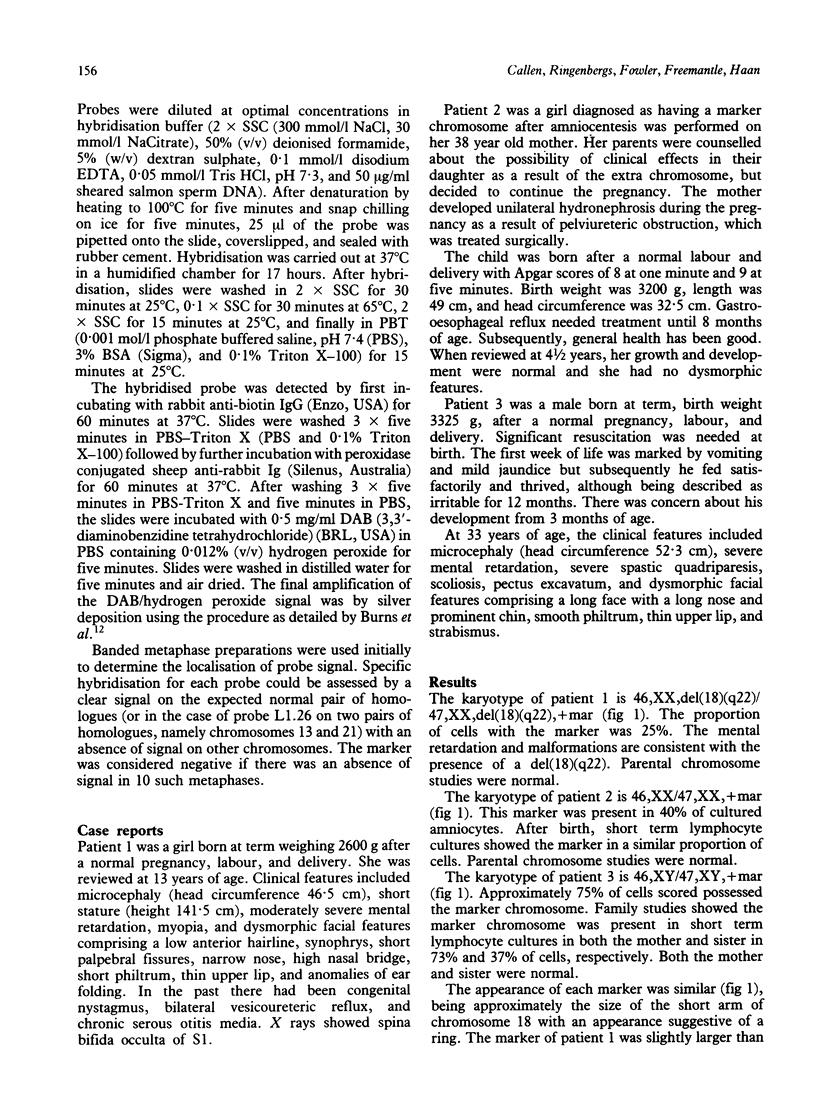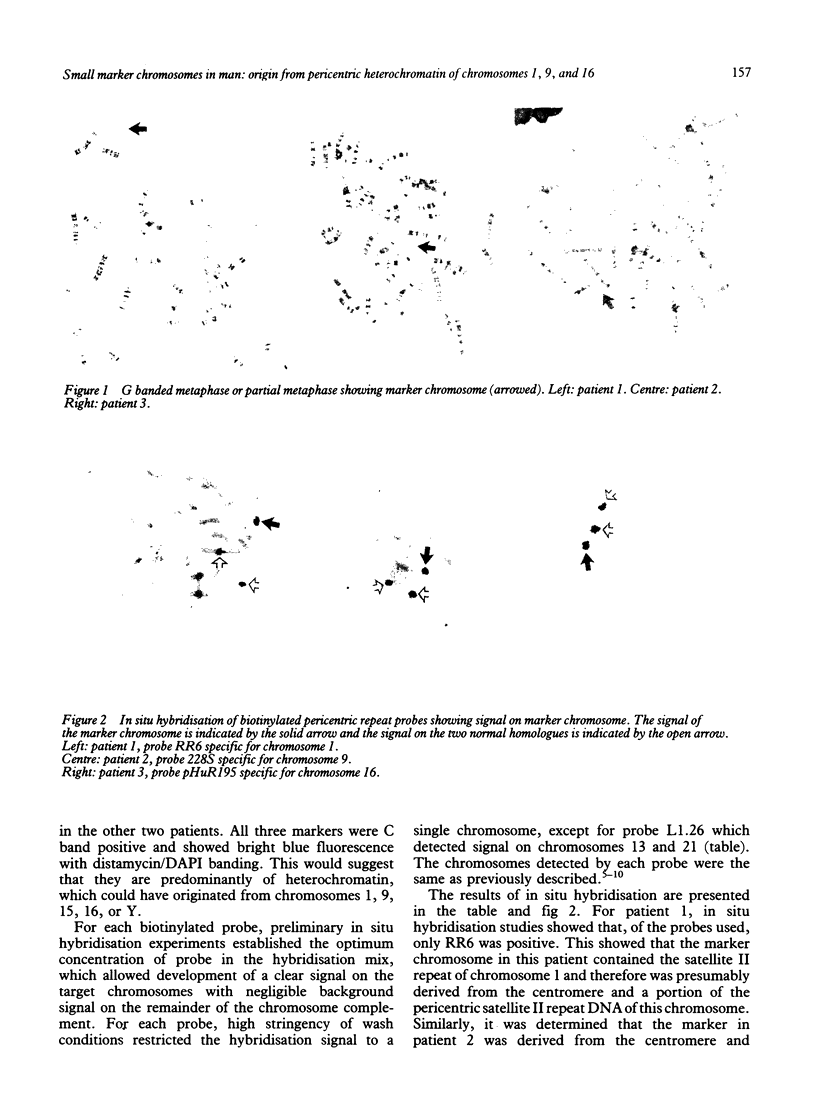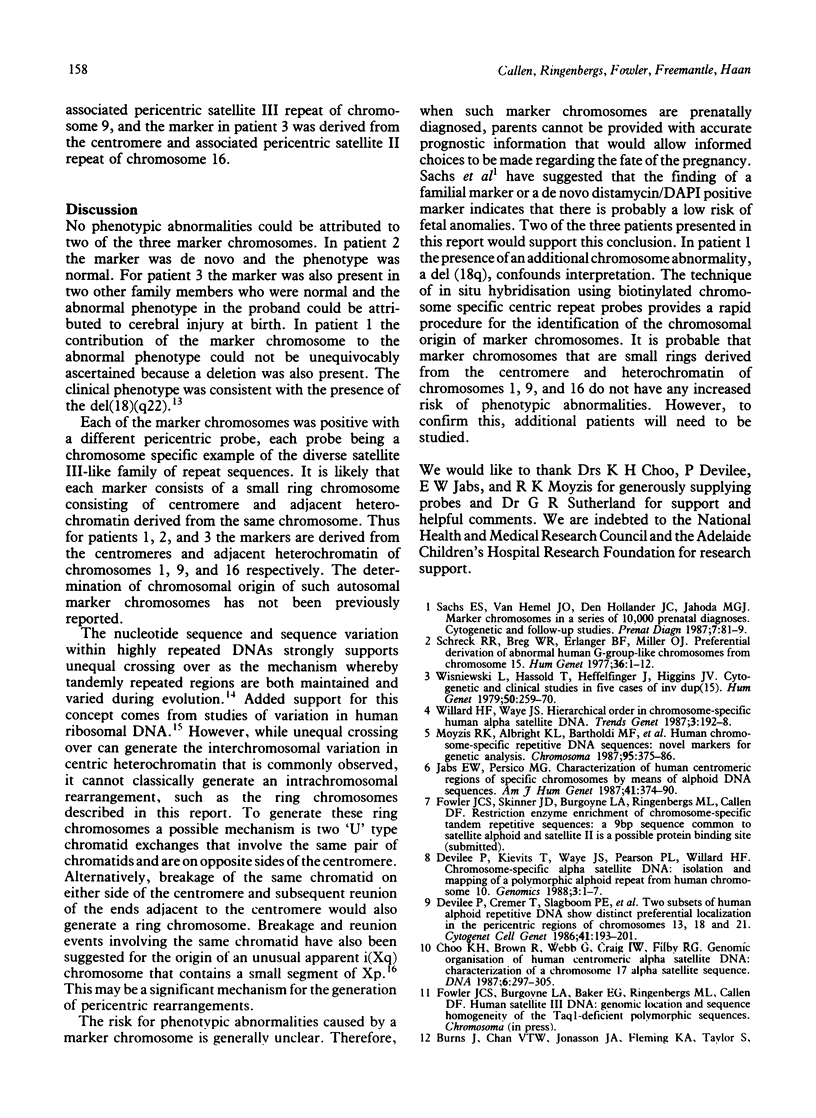Abstract
Three patients with different marker chromosomes were screened by in situ hybridisation using biotinylated probes to chromosome specific pericentric repeats to determine the chromosomal origin of the marker. Each marker had a different origin, with one from each of chromosomes 1, 9, and 16. This is the first time that autosomal marker chromosomes consisting of a small ring have been shown to be derived from the pericentric heterochromatin of metacentric and submetacentric chromosomes. Evidence suggests that such markers are not associated with any significant risk of phenotypic abnormalities, but additional cases need to be studied.
Full text
PDF




Images in this article
Selected References
These references are in PubMed. This may not be the complete list of references from this article.
- Brutlag D. L. Molecular arrangement and evolution of heterochromatic DNA. Annu Rev Genet. 1980;14:121–144. doi: 10.1146/annurev.ge.14.120180.001005. [DOI] [PubMed] [Google Scholar]
- Burns J., Chan V. T., Jonasson J. A., Fleming K. A., Taylor S., McGee J. O. Sensitive system for visualising biotinylated DNA probes hybridised in situ: rapid sex determination of intact cells. J Clin Pathol. 1985 Oct;38(10):1085–1092. doi: 10.1136/jcp.38.10.1085. [DOI] [PMC free article] [PubMed] [Google Scholar]
- Choo K. H., Brown R., Webb G., Craig I. W., Filby R. G. Genomic organization of human centromeric alpha satellite DNA: characterization of a chromosome 17 alpha satellite sequence. DNA. 1987 Aug;6(4):297–305. doi: 10.1089/dna.1987.6.297. [DOI] [PubMed] [Google Scholar]
- Devilee P., Cremer T., Slagboom P., Bakker E., Scholl H. P., Hager H. D., Stevenson A. F., Cornelisse C. J., Pearson P. L. Two subsets of human alphoid repetitive DNA show distinct preferential localization in the pericentric regions of chromosomes 13, 18, and 21. Cytogenet Cell Genet. 1986;41(4):193–201. doi: 10.1159/000132229. [DOI] [PubMed] [Google Scholar]
- Devilee P., Kievits T., Waye J. S., Pearson P. L., Willard H. F. Chromosome-specific alpha satellite DNA: isolation and mapping of a polymorphic alphoid repeat from human chromosome 10. Genomics. 1988 Jul;3(1):1–7. doi: 10.1016/0888-7543(88)90151-6. [DOI] [PubMed] [Google Scholar]
- Jabs E. W., Persico M. G. Characterization of human centromeric regions of specific chromosomes by means of alphoid DNA sequences. Am J Hum Genet. 1987 Sep;41(3):374–390. [PMC free article] [PubMed] [Google Scholar]
- Moyzis R. K., Albright K. L., Bartholdi M. F., Cram L. S., Deaven L. L., Hildebrand C. E., Joste N. E., Longmire J. L., Meyne J., Schwarzacher-Robinson T. Human chromosome-specific repetitive DNA sequences: novel markers for genetic analysis. Chromosoma. 1987;95(6):375–386. doi: 10.1007/BF00333988. [DOI] [PubMed] [Google Scholar]
- Sachs E. S., Van Hemel J. O., Den Hollander J. C., Jahoda M. G. Marker chromosomes in a series of 10,000 prenatal diagnoses. Cytogenetic and follow-up studies. Prenat Diagn. 1987 Feb;7(2):81–89. doi: 10.1002/pd.1970070204. [DOI] [PubMed] [Google Scholar]
- Schreck R. R., Breg W. R., Erlanger B. F., Miller O. J. Preferential derivation of abnormal human G-group-like chromosomes from chromosome 15. Hum Genet. 1977 Apr 7;36(1):1–12. doi: 10.1007/BF00390430. [DOI] [PubMed] [Google Scholar]
- Wisniewski L., Hassold T., Heffelfinger J., Higgins J. V. Cytogenetic and clinical studies in five cases of inv dup(15). Hum Genet. 1979 Sep;50(3):259–270. doi: 10.1007/BF00399391. [DOI] [PubMed] [Google Scholar]




